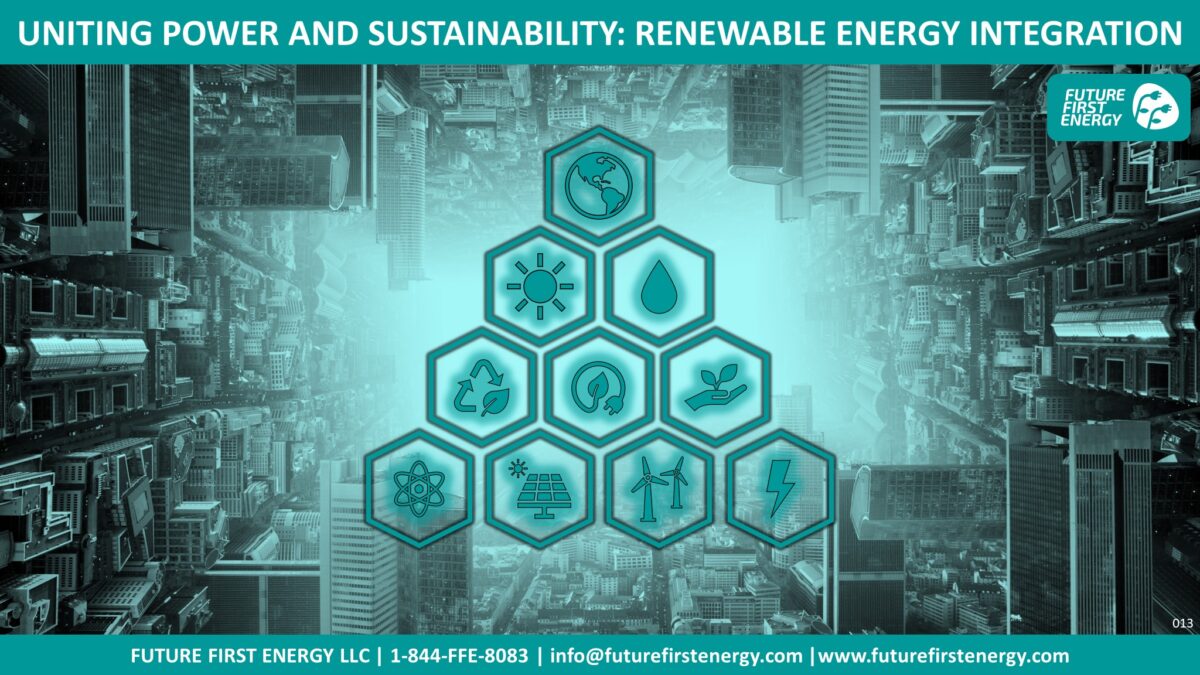Uniting Power and Sustainability: Renewable Energy Integration
In the global pursuit of a sustainable future, renewable energy integration emerges as a powerful force driving positive change. By harnessing the boundless potential of renewable sources like solar, wind, hydro, and geothermal, we transform the energy landscape, creating a more sustainable and eco-friendly world. In this article, we’ll explore the transformative impact of renewable energy integration and how it revolutionizes the way we power our lives. Let’s unite power and sustainability on the path to a greener tomorrow. 🌞🌬️🌍
#RenewableEnergy #SustainableFuture #CleanEnergyRevolution #InnovationsForTomorrow
1. Solar Energy: Tapping the Power of the Sun
Solar energy is a key player in renewable energy integration. Photovoltaic (PV) systems capture sunlight and convert it into electricity, powering homes, businesses, and even entire communities. As solar technology advances, integration with storage systems ensures uninterrupted power supply, maximizing solar energy’s potential.
2. Wind Energy: Riding the Winds of Change
Wind turbines gracefully spin with the wind’s energy, generating electricity in wind farms across the globe. The scalability of wind power allows integration at both utility-scale and decentralized levels, contributing to a diverse and resilient energy grid.
3. Hydropower: The Flow of Clean Energy
Hydropower harnesses the energy of flowing water to generate electricity. From large hydroelectric dams to micro-hydro systems in remote regions, this renewable resource provides stable and eco-friendly power generation.
4. Geothermal Energy: Tapping Earth’s Subterranean Heat
Geothermal energy taps into the Earth’s natural heat, producing sustainable electricity and heating for buildings. Geothermal power plants and ground-source heat pumps enable seamless integration of this clean and reliable energy source.
5. Grid Modernization: Paving the Way for Renewables
Integrating renewable energy into the power grid requires modernization. Smart grids with advanced monitoring, control, and communication technologies enable efficient and reliable management of renewable energy flows.
6. Storage Solutions: Unleashing Renewable Potential
Energy storage technologies, such as batteries and pumped hydro storage, play a crucial role in renewable energy integration. These solutions store excess energy during periods of high generation and release it during peak demand, ensuring a steady supply of renewable power.
7. Electrification: Clean Energy for Transportation
Renewable energy integration extends beyond electricity generation. Electrification of transportation, such as electric vehicles (EVs) and charging infrastructure, reduces reliance on fossil fuels, contributing to a cleaner and sustainable future.
8. Distributed Energy Resources: Empowering Local Communities
Distributed energy resources (DERs), including rooftop solar panels and small wind turbines, empower individuals and communities to generate their own renewable energy. DERs enhance energy self-reliance and resilience, transforming consumers into prosumers.
Conclusion: Empowering a Renewable Revolution
Renewable energy integration is not just a buzzword; it’s a transformative revolution that empowers us to shape a greener and more sustainable future. By uniting the power of renewables with innovative technologies, we create an energy landscape that harmonizes with nature, reduces emissions, and secures energy access for all. Let us unite in this collective endeavour to propel renewable energy integration and illuminate the path to a brighter, cleaner, and more sustainable tomorrow. 🌟💚🍃
Share your thoughts and experiences on renewable energy integration in the comments below. Together, let’s inspire and empower a global movement towards a greener and renewable future. 🌞🌬️🌎
#RenewableEnergy #SustainableFuture #CleanEnergyRevolution #InnovationsForTomorrow



